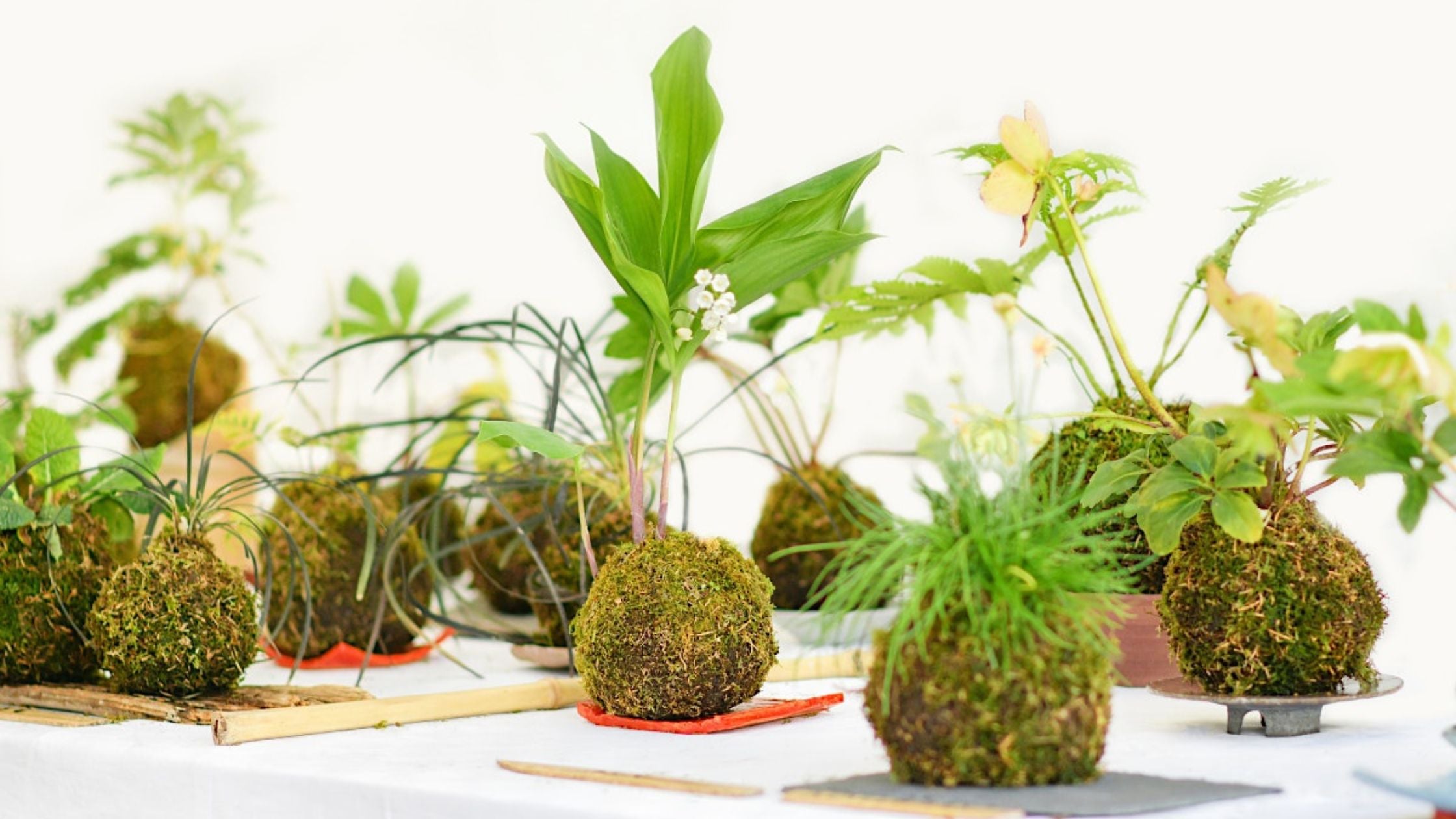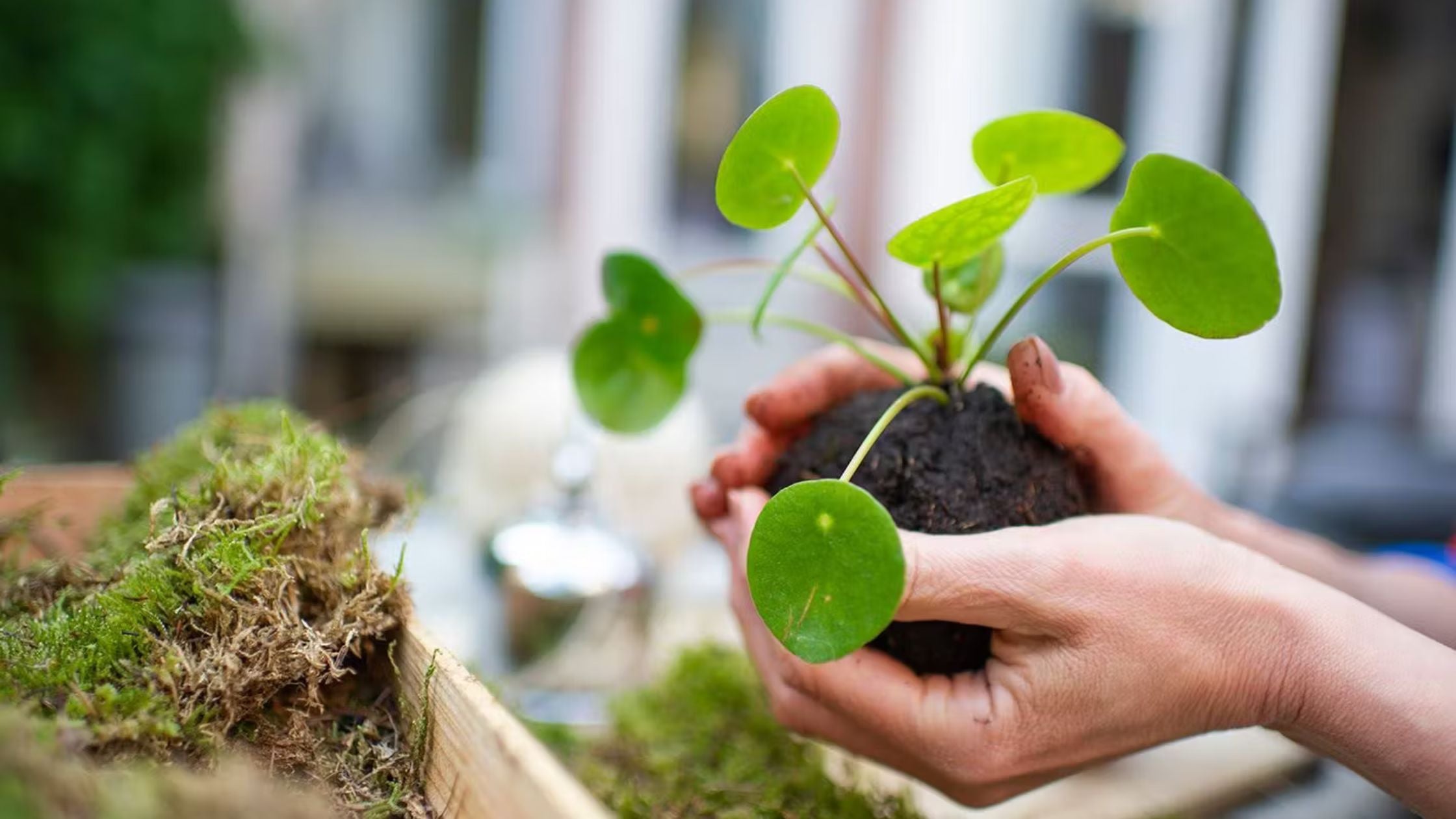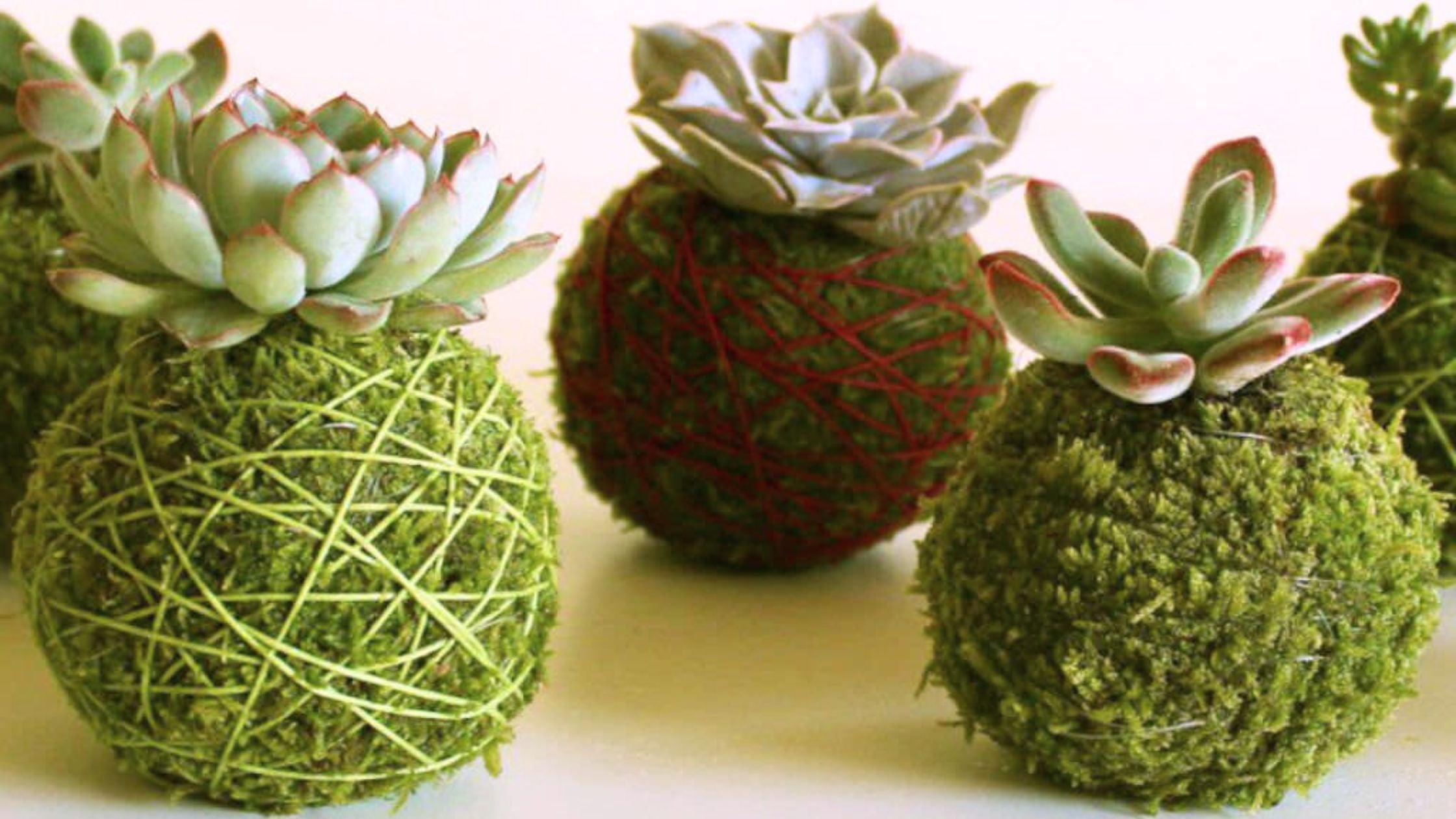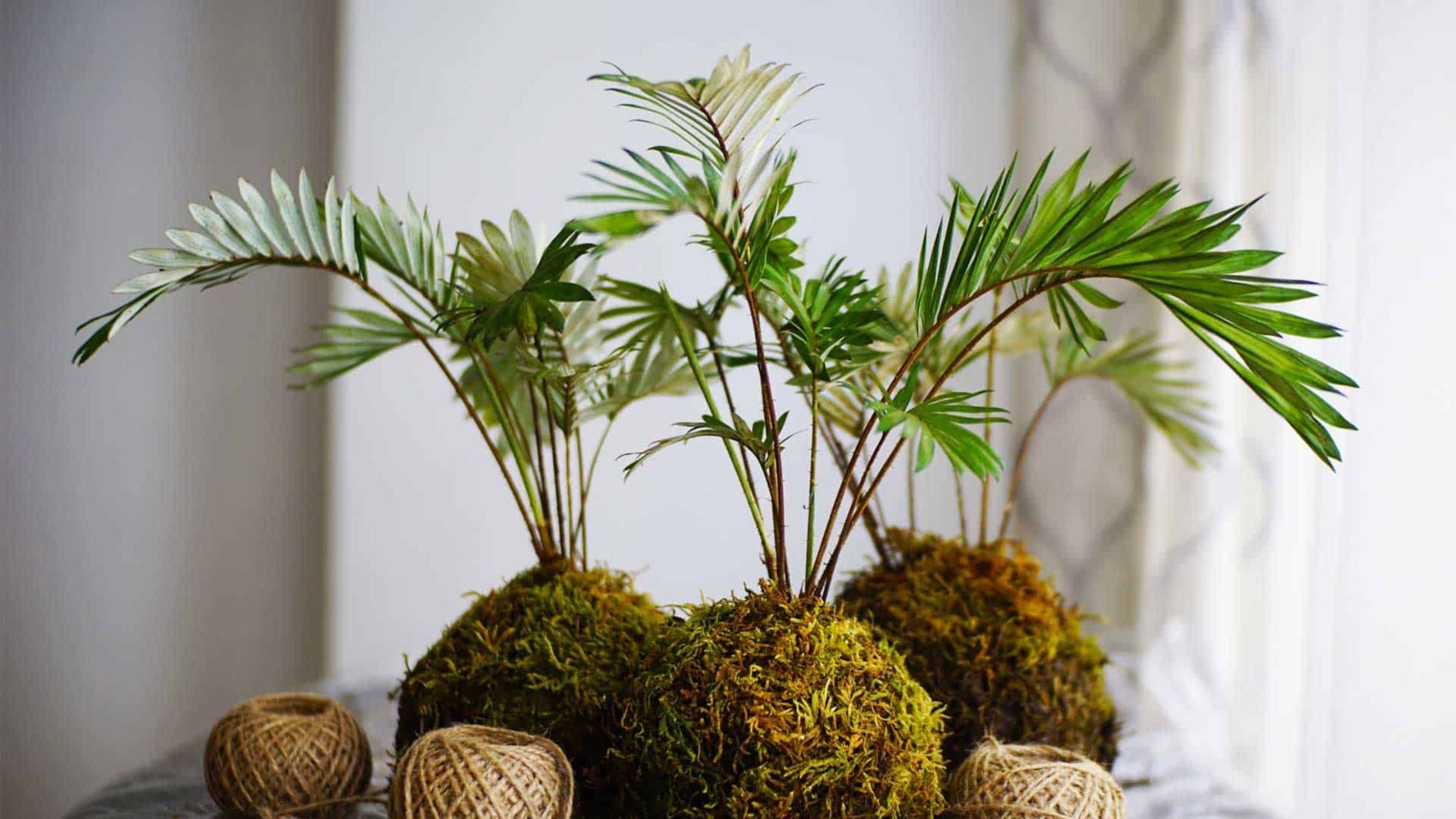How To Build a Kokedama!

How To Build a Kokedama!
Lovers of Japanese gardens no doubt have heard or even put together a Kokedama. The word Kokedama comes from the Japanese words for moss and ball. It is a gardening art form that is expressed through the growing of a tropical plant in a moss covered soil ball that is wrapped in water proof string or fishing line. It is also called ‘The Poor Man’s Bonsai’. Kokedama can be displayed individually or as a group hanging or on a decorative surface such as a tray, plate or low bowl.
The 2-3 year lifespan of the plants used in Kokedama is dependent on good cultural practices ( watering, fertilizing and pruning) and the type of plant used. In most cases the plant will eventually outgrow the moss ball but most can be trimmed back to delay the growth. You can also move the plant to a larger ball or use it for propagation purposes.
First, determine where you want to display your Kokedama. Are you going to make one or many? Do not locate them in direct sun ( a bright room is ok), near furnace vents or in the way of window and door drafts. Will you be hanging your creation or enjoying it on a bookshelf or coffee table?
Gather Your Supplies - You will need –
A table covered with plastic – this can become a messy project!
Your plant (s). Choose plants with small root systems or slow growing plants. Tropicals in a two and four inch pot (5-10 cm) are recommended. (See suggested plant lists below.)
A medium, deep Rubbermaid container. This is where you create the balls and cut down on the mess.
Tropical plant soil with a small amount of perlite. You want the soil to be somewhat airy but moisture retentive so it will hold together. Two cups of soil will make a 4 inch Kokedama.
Gloves, scissors, water
Pre-moistened Sphagnum Moss – green or tan colored natural moss. Do not use plastic backed sheet moss, artificial or dyed moss.
Waterproof string or fishing line. Dental floss also works well. Avoid using bio-degradable hemp, jute or cotton twine.
Make the Soil Ball
Put your soil into the Rubbermaid container. Add water slowly to the soil until it just holds together. Firmly pack the soil as you form it into a ball. To test for firmness, lightly toss the ball into the air a couple of times; over the Rubbermaid container!
Remove as much soil from the root ball of the plant as you can. You can also gently run some warm water over the roots to dislodge any soil.
Gently pull the ball in half using both hands. Lay the plant roots in the centre of one half making sure the plant leaves are above the ball. Place the other half of the soil ball overtop the roots and gently press the two halves together. At this point you may want to mist the soil ball to ensure it is sticking together and set aside.

Join the pre-moistened moss pieces by overlapping them, one slightly over the other. Be generous with the moss. You want to form a square that will cover the ball and meet at the plant stem on top. Position the soil ball in the middle of the moss and gather it up around the ball.
Wrap the ball with the cord or fishing line in all directions making sure you make some passes over the cords starting point on the ball. You are wrapping to make sure the sphagnum moss stays in place so there will be quite a few overlapping wraps to achieve this. Securely tie off the end of the cord.
Soak the ball in a bowl of warm water for about 5- 10 minutes. The Kokedama will be quite heavy. Make sure the ball is allowed to drain and you are ready to display! Ideal spots to display Kokedama are in the kitchen or a bathroom (with a window) where humidity is high.
If you will be hanging the Kokedama, tie a length of twine onto the top of the wrapped ball cord and hang from a secure location. Hang Kokedama in odd numbered groups to make a striking display.
A beautiful way to display Kokedama is to use a simple macramé hanger and fit a decorative plate in the hanger base. The Kokedama can sit on the plate.
The planted moss ball can be also be displayed on a flat wood base with decorative rock, small driftwood pieces and more moss. If the plant eventually begins to flop over, do not hesitate to provide a wooden skewer as a support. Curly willow or natural twigs can also be used.

When the ball begins to feel light, water again by soaking in a bowl of warm water.
Once a month, add a small amount of water- soluble tropical plant fertilizer to the bowl of water.
Tropical Plants Recommended for Kokedama
Shade and Semi-Shade
Pothos, English Ivy, Rabbits Foot Fern, Grape Ivy, Creeping Fig, Prayer Plant.
Bright Light Location
Variegated Ivies, Spider Plant, Small Tree – Form Ficus, Nerve Plant (Fittonia), Purple Waffle Plant, Money Plant, Peace Lily, Brake Fern, Button Fern, Asparagus Fern, Emerald Ripple Peperomia.

